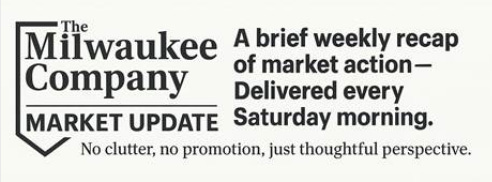Hotter Inflation In June Will Likely Keep Fed Monetary Policy Steady For The Near Term
By James Picerno | The Milwaukee Company
Tariffs may be nudging inflation higher, persuading the Fed to delay rate cuts
The market is pricing in no change in Fed policy at the upcoming July 30 FOMC meeting
The Fed’s September meeting, by contrast, is currently estimated to be close to a coin flip for standing pat vs. cutting rates
The June report on consumer inflation offered the first hint that tariffs may be starting to drive up prices, particularly for goods. The update is hardly a smoking gun, and relative to recent history it’s still fair to say that inflation remains well-behaved, albeit at a pace above the Fed’s 2% target. The question is whether the hotter-than-expected data for last month is a sign of things to come?
No one knows, but it’s a reasonable assumption that the Federal Reserve will see the consumer price index (CPI) data for June as a new reason to keep interest rates steady at the next policy meeting on July 30. The market was already expecting the central bank to stand pat this month, and the June CPI data only strengthens the calculus.
As for the September FOMC meeting on September 17, until recently it was increasingly viewed as the start date for rate cuts, based on Fed funds futures. But market sentiment has walked the forecast back and is close to estimating the odds for a rate cut vs. no cut as a coin flip, according to CME data.
Looking further out, the inputs for considering Fed policy path ahead involves several factors. Perhaps the most important in terms of data: inflation updates over the next couple of months. Between today and the September 17 policy meeting, the central bank will have four new reports to analyze:
—Personal consumption expenditures (PCE) inflation for June (July 31) —CPI inflation for July (August 12) —PCE inflation for July (August 29) —CPI inflation for August (September 11)
Meanwhile, sentiment data via the Purchasing Managers’ Index for manufacturing suggests that inflation pressure is building in the supply chain network for goods. “There was some notable upward pressure on input prices during June, with inflation accelerating to its highest in just under three years,” according to a report from S&P Global published July 1.
A possible offset to higher inflation is a slowing economy. The data, however, is mixed on this front. Following a modest decline in economic activity in the first quarter, several nowcasts indicate a solid rebound for the government’s Q2 gross domestic product report scheduled for July 30. The Atlanta Fed’s GDPNow model, for example, is projecting a 2.6% annualized increase in output (July 9) vs. Q1’s 0.5% decline.
The outlook for the second half of the year is more nuanced, in part because of uncertainty about the impact of tariffs on consumer activity. If spending eases, as some economists predict, the downshift could be a factor that helps keep inflation relatively stable.
What is clear is that the current 4.33% median Fed funds target rate remains well above the inflation trend. Even after the acceleration in consumer prices in June, the policy rate is roughly 1.4 percentage points above headline CPI’s one-year change – close to the biggest gap post-pandemic.
TMC Research’s multi-factor Fed funds model also indicates that policy remains tight. By our estimate, the current median Fed funds target rate has increased to 110 basis points above the estimated neutral rate, a two-month high. It’s reasonable to assume that absent tariffs, the Fed might have cut rates by now and would be poised to cut further at the next meeting.
For thinking about what comes next, the key wildcard remains how tariff policy evolves, particularly with respect to President Trump’s August 1 deadline, when higher import duties are planned without new trade deals on a country-by-country basis.
Meantime, the market is still leaning into expectations for two ¼-point rate cuts by the end of the year, according to Fed funds futures. A key factor for whether that happens or not depends on the Fed’s confidence that tariff-related inflation will be mild and relatively short-lived. That’s a tough call at the moment, but it may become a bit easier once the post-August 1 outlook starts to come into focus in a couple of weeks.




